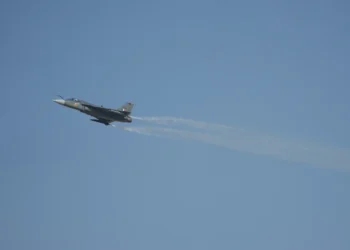Why Only 50 Pilots Are Qualified to Land at Bhutan’s Paro Airport
Imagine flying into a remote airport surrounded by towering mountain peaks, with no radar to guide you and a runway so short that a minor mistake could send you off course. For pilots flying into Paro International Airport in Bhutan, this is their daily reality. The Paro Airport (PBH) is widely regarded as one of the most technically challenging landings in the world—and only about 50 pilots worldwide are qualified to tackle it.
The scene is almost cinematic: as the pilot of an A319 speeds toward a narrow runway tucked between two 18,000-foot peaks, a small Buddha statue in the cockpit watches over the flight. The plane executes a dramatic last-minute turn, narrowly avoiding the surrounding mountains before touching down safely. The passengers, some clutching their seat armrests in tense anticipation, break into applause.
For those who have flown into Paro, this experience is an unforgettable one—but it’s far from easy. The airport, located in a mountainous valley in the Himalayas, is not only an aviation marvel but also a testament to the skill and nerves of steel required by pilots.
What makes Paro Airport stand out is its unique geographical location. Bhutan is a landlocked country nestled between China and India, and over 97% of its terrain is mountainous. The airport sits at 7,382 feet above sea level, surrounded by snow-capped peaks, which presents both breathtaking views and complex challenges for pilots. The runway, at just 7,431 feet long, is short, and due to the mountains, pilots can only spot it in their final moments before landing.
Moreover, Paro is a Category C airport, meaning pilots must undergo specialized training to operate there. There’s no radar to guide them, and the landings are completely manual. As Captain Chimi Dorji, who has been flying for Bhutan’s national airline, Druk Air, for 25 years, puts it: “If it were dangerous, I wouldn’t be flying.”
The challenges of Paro aren’t just about flying the plane—it’s also about understanding the conditions around it. At higher elevations, the air is thinner, meaning the plane must fly faster to maintain the same speed relative to the ground. Combine that with unpredictable weather, and you’ve got a recipe for an intense landing experience.
The airport staff prefers to schedule all flights to Paro before noon to avoid the risk of afternoon thermal winds. By midday, strong winds and rising temperatures create updrafts and turbulence in the valley, making flying more difficult. While takeoff is less impacted by these conditions, flights must land in the morning for the safest conditions.
In the monsoon season (June to August), thunderstorms and hail the size of golf balls can be common. During this period, pilots have to make the call whether or not to fly, often waiting days for a safe window to land.
Pilots flying into Paro not only need technical flying skills but also a deep knowledge of the local terrain and how to navigate it safely. According to Dorji, pilots are trained to understand “local area competence”—being familiar with the unique features of the land and adjusting flight patterns accordingly. “If you mess it up by even a fraction of an inch,” he says, “you could land on top of someone’s house.”
For Bhutan, this means that only a handful of highly skilled pilots are qualified to land at Paro. Training is rigorous, with pilots required to master both the geography and weather conditions unique to the region.
While Paro Airport remains a challenging destination for pilots, the aviation industry in Bhutan is evolving. Plans are already underway for a new airport in Gelephu, which will feature longer runways and flatter terrain, making it easier for non-specialized pilots to operate there. This could pave the way for direct flights from North America, Europe, and the Middle East within the next few years.
In Bhutan, the aviation industry is still young. Druk Air, the national carrier, was only founded in 1981, far later than major airlines like KLM (1919) and Delta Air Lines (1928). As the country looks to expand, there’s a growing effort to train local pilots rather than rely on foreign recruits. Currently, Bhutan has just 50 licensed pilots, but the number is expected to grow rapidly in the coming years.
Aspiring pilots in Bhutan must be able to navigate the difficult seasons of the country—flying in unpredictable weather, mastering mountain routes, and understanding how to make safe landings. Captain Dorji, who trains the next generation of pilots at Druk Air, is excited about the future, saying, “I consider myself the bridge between the old generation and the new one.”
As Bhutan prepares to expand its aviation industry, it’s clear that the land of the Thunder Dragon will continue to offer a unique and challenging experience for those who are lucky enough to land at Paro Airport.
This article was rewritten by JournosNews.com based on verified reporting from trusted sources. The content has been independently reviewed, fact-checked, and edited for accuracy, neutrality, tone, and global readability in accordance with Google News and AdSense standards.
All opinions, quotes, or statements from contributors, experts, or sourced organizations do not necessarily reflect the views of JournosNews.com. JournosNews.com maintains full editorial independence from any external funders, sponsors, or organizations.
Stay informed with JournosNews.com — your trusted source for verified global reporting and in-depth analysis. Follow us on Google News, BlueSky, and X for real-time updates.














